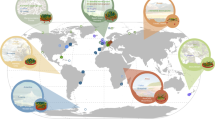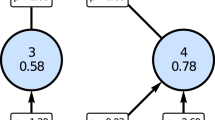Abstract
Grazing food chains in natural ecosystems tend to be relatively short, usually involving no more than four or five trophic levels 1–3. Cohen4 describes 19 food webs with a total of 102 top predators. Recent independent analyses of these data by Cohen4 and Pimm (see ref. 5) show that most top predators occupy the third trophic level. However, as Slobodkin3 has observed, “It is possible to conceive of predators that are small enough and ferocious enough to attempt to live off the top of a trophic pyramid, and thereby become a seventh, or even an eighth, trophic level. It is by no means clear why this situation has not occurred.” Our answer, which we discuss here, incorporates energy transfer calculations introduced by Hutchinson1 and Odum and Odum2 within the framework of the evolutionarily stable strategy (ESS) developed by Maynard-Smith and Price 6,7. We argue that food chains should collapse to the shortest possible length compatible with biochemical and physiological constraints. This minimal length is frequently three, and is largely independent of primary productivity.
This is a preview of subscription content, access via your institution
Access options
Subscribe to this journal
Receive 51 print issues and online access
$199.00 per year
only $3.90 per issue
Buy this article
- Purchase on Springer Link
- Instant access to full article PDF
Prices may be subject to local taxes which are calculated during checkout
Similar content being viewed by others
References
Hutchinson, G. E. Am. Nat. 93, 145–159 (1959).
Odum, H. T. & Odum, E. P. in Fundamentals of Ecology (ed. Odum, E. P.) 2nd edn 43–87, 3rd edn, 37–85 (Saundert, Philadelphia, 1959).
Slobodkin, L. Growth and Regulation of Animal Populations, 159 (Holt, Reinhart and Winston, New York, 1961).
Cohen, J. E. Food Webs and Niche Space (Princeton University Press, 1978).
May, R. M. in Population Dynamics (eds Andenon, R. M., Turner, B. D. & Taylor, L. R.) (Blackwell, Oxford, 1979).
Maynard-Smith, J. & Price, G. R. Nature 246, 15–18 (1973).
Maynard-Smith, J. Am. Scient. 64, 41–45 (1976).
Pimm, S. L. & Lawton, J. H. Nature 268, 329–331 (1977).
Saunders, P. T. Nature 272, 189–190 (1978).
MacArthur, R. H. & Pianka, E. R. Am. Nat. 100, 603–609 (1966).
Author information
Authors and Affiliations
Rights and permissions
About this article
Cite this article
Hastings, H., Conrad, M. Length and evolutionary stability of food chains. Nature 282, 838–839 (1979). https://doi.org/10.1038/282838a0
Received:
Accepted:
Issue Date:
DOI: https://doi.org/10.1038/282838a0
This article is cited by
-
The importance of omnivory and predator regulation of prey in freshwater fish assemblages of North America
Environmental Biology of Fishes (1990)
-
Ecology: The structure of food webs
Nature (1983)
Comments
By submitting a comment you agree to abide by our Terms and Community Guidelines. If you find something abusive or that does not comply with our terms or guidelines please flag it as inappropriate.



